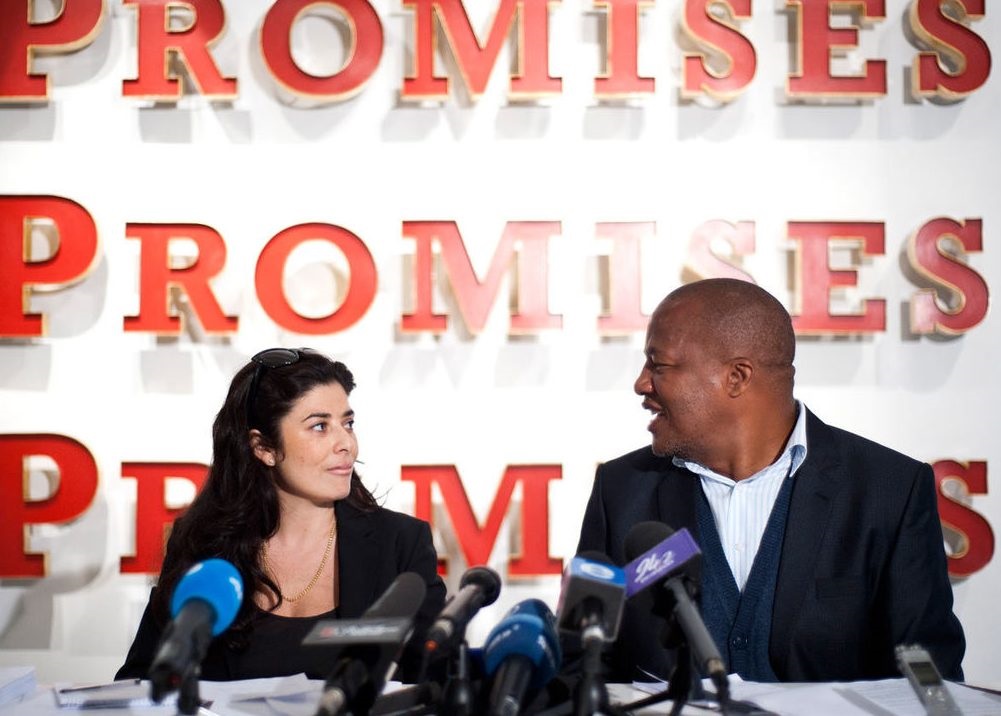On 25 November 1966 Linda Givon (then Goodman) opened the Goodman Gallery in Hyde Park, Johannesburg. The Goodman Gallery has been instrumental to the development and professionalisation of how commercial galleries are structured within South Africa and the continent, as well as the responsibilities of gallery practices beyond circulation of work and the immediate imperatives of commerce, such as nondiscriminatory and inclusive curatorial decisions. From the outset this was apparent in operating against the segregation defining exhibition practices under Apartheid law, in which Black artists and art viewers were not permitted into the country’s major art museums that served the dictates of the Afrikaner Nationalist regime.
During the first years of the gallery exhibitions by several Black Modernist artists associated with the Polly Arts Centre, including Sydney Kumalo, David Koloane, and Dumile Feni, were held alongside work by White artists such as Walter Battiss, Cecil Skotnes and Edoardo Villa that sought to investigate and propel Afrocentrism. Affording the same space to artists beyond racialism was a progressive gesture which in parts reflected the concurrent decolonisation of Africa in the sixties, and inaugurated a focus on a geopolitical aesthetics of social revolution, confrontation, and resistance, which is still the galleries stance.
In 1983 the Association of Artists of the World against Apartheid, in co-operation with the United Nations Special Committee against Apartheid and the Goodman Gallery, organised the poster exhibition Art Against Apartheid, which opened in Paris and travelled thereafter to various cities around the world. The exhibition introduced South African artists like Gavin Jantjies as contemporary to Richard Hamilton amidst the cultural boycott, and is now kept at the UWC-Robben Island Mayibuye Archives, housed at the University of the Western Cape. Several Goodman artists like Robert Hodgins, William Kentridge, Noria Mabasa, Ezrom Legae, Pat Mautloa, and Leonard Matsoso were included in Ricky Burnett’s landmark curated exhibition Tributaries: a view of contemporary South African art at the Africana Museum (now Museum Africa) in Johannesburg in 1985, which was the first occasion a local museum exhibition showcased the work of Black Artists alongside White names in the same show.
 Liza Essers and ANC Spokesperson Jackson Mthembu in 2012. Image source
Liza Essers and ANC Spokesperson Jackson Mthembu in 2012. Image source
During the 2nd Johannesburg Biennale Trade Routes: History and Geography in 1997 Linda Givon relaunched the gallery at the current Parkwood premises, with an exhibition titled Lift Off, which was followed in 2007 by Lift Off II as the gallery opened its branch in Woodstock, Cape Town on 22 March with works by Willie Bester, David Goldblatt, Sam Nhlengethwa, and Sue Williamson amongst others, and under the senior curatorship of Storm Janse van Rensburg. A role that has since been filled by Federico Freschi and Natasha Becker. In 2008 the gallery exchanged hands with Liza Essers becoming the new director as successor to Givon. Her directorship has focussed on the expanse of the gallery roster to include international artists – both South African artists living abroad like Candice Bretiz and Broomberg & Chanarin, as well as artists from the rest of the African continent, particularly eschewing the divisions between Sub-Saharan and Northern Africa, like Ghada Amer, Mounir Fatmi, and Kudzanai Chiurai, and African American artists such as Hank Willis Thomas, and Ruby Onyinyechi Amanze who make work that speak to the African Diaspora. Essers also initiated the gallery’s on-going South South series of exhibitions, which investigate affinities between Brazil and South Africa around questions of shared histories and political exchange in trans-Atlantic, and Southern Hemispherical, trade.
In 2012 Goodman Gallery was the site of a national controversy regarding artist Brett Murray painting The Spear as part of his solo exhibition Hail to the Thief II exhibited in Johannesburg, depicting the President Jacob Zuma in the pose of Vladimir Lenin, but with his penis exposed. The African National Congress received a court summons that stated the Goodman Gallery must remove the work from the exhibition, this was a pivotal moment in terms of state censorship of a White artist. Goodman refused to do so stating “we support our artists’ freedom of speech and expression and encourage them to show work that challenges the status quo, ignites dialogue and shifts consciousness.”[1] Some felt the work exceeded satire and was racist in using tropes related to the Black male body that went against the constitutional right to human dignity. The work was subsequently vandalised at the exhibition.
There is of course, a Franchise which has now opened in Cape Town!
End Notes
[1] Liza Essers cited in Matthew Burbridge, “Gallery refuses to remove ‘spear of the nation’ artwork”, Mail & Guardian, 17 May 2012. ↵

